There is truly no scent more comforting to me than that of crushed garlic cloves sauteing in olive oil.
You can always tell when someone close to you has recently enjoyed fresh garlic.
And while some may find that scent a bit overpowering, I happen to love the smell of this pungent bulb.
And if you think it doesn’t smell when it’s growing in the ground, think again.
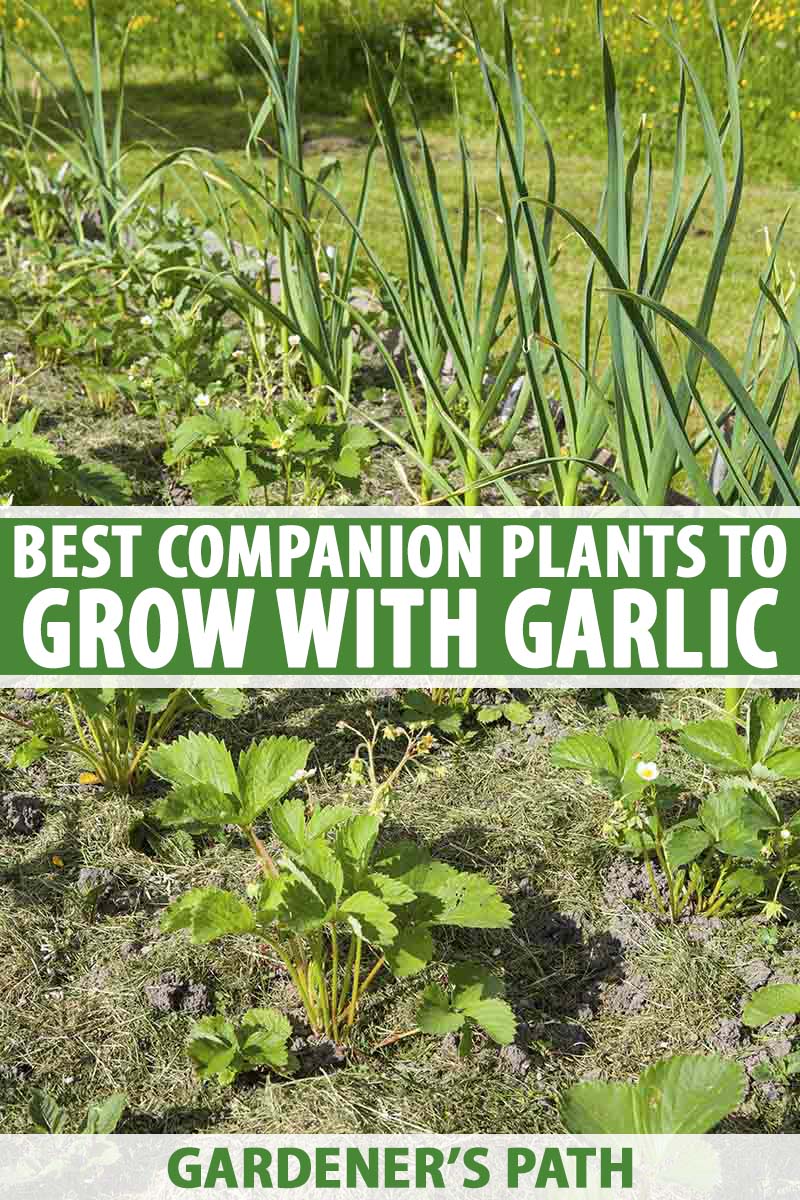

We link to vendors to help you find relevant products. If you buy from one of our links, we may earn a commission.
I planted four garlic cloves in a container recently and set the pot on the rolling garden cart in my office.
It took just a few hours for my entire office to take on the earthy, tangy scent of this aromatic herb.
The good news for gardeners everywhere is that many insects and pests find the odor less than appealing.
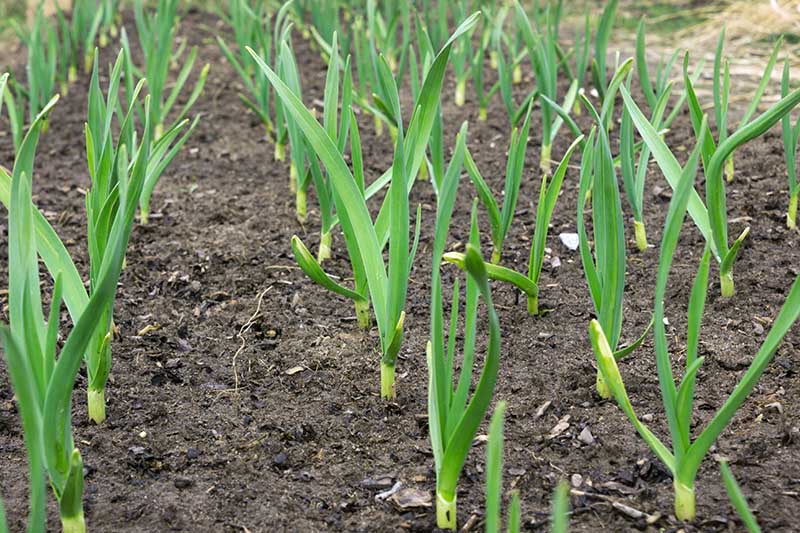

In fact, they find it downright repulsive.
This fragrant bulb makes a wonderful natural pest repellent. Only a few insects are like me and don’t mind the scent at all.
In this article, you’ll find out which plants grow best alongside this aromatic bulb. Plus, I’ve included a short list of plants not to sow next door to the odiferous Allium sativum.
What You’ll Learn
Why Companion Plant?
Companion planting is an excellent way for plants with mutually beneficial traits to support each other’s growth.
Basically, it means planting things thoughtfully in the same raised bed or row so that the surrounding vegetation will thrive or offer some form of mutual benefit.
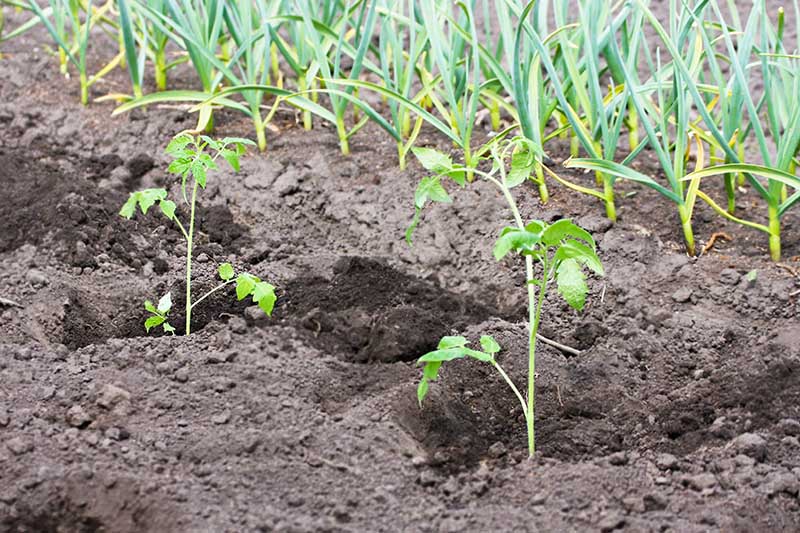

Here are the three main roles that garlic and its companions can play when planted together:
- Pest repellents: the pungent aroma can repel many insect pests.
- Fungal repellents: the sulfur in the bulb is known to repel many types of soil-borne fungi.
- Ground cover providers: some low growing plants groundcover to keep garlic free from troublesome weeds.
The bulb also attracts predatory and beneficial insects, such as ladybugs, wasps, and lacewings.
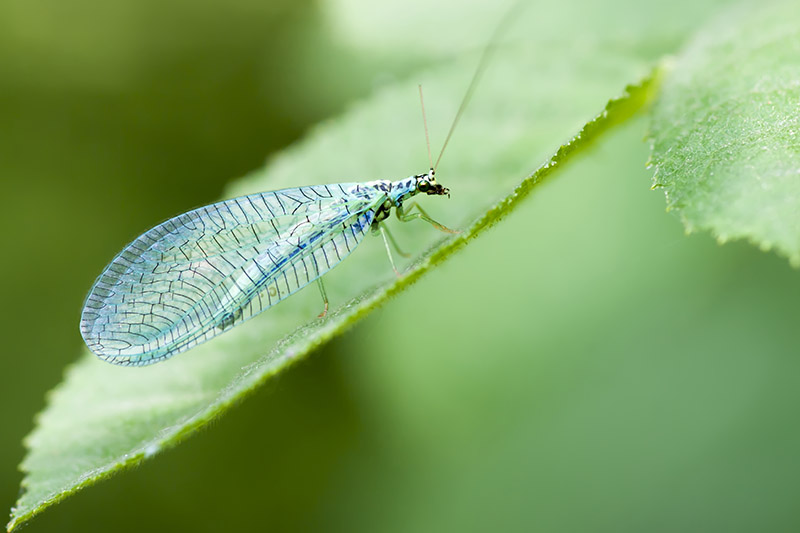

The only things you should not grow alongside it are:
This is because the herb is known to inhibit their growth or compete for resources.
According to Louise Riotte, author of the companion planting guide, “Carrots Love Tomatoes,” available via Amazon, garlic and all other Alliums inhibit the growth of beans.

In short, garlic benefits most plants in your garden, with just a few exceptions. In this article, we’ll focus on nine of the best plants to grow as companions.
9 Companion Plants for Garlic
Most people plant A. sativum outdoors in the fall, allowing it to go dormant during the winter before it begins vigorous growth in the spring.


But some of the plants that are most beneficial to put in the ground with the bulbs prefer a spring sowing.
Because of this, companion planting takes a bit of advance planning.
To pair with plants that you’d typically grow in the spring, you can either sow a spring crop of prechilled hardneck garlic, or a softneck type to be harvested in three months, which doesn’t require chilling.
If you sow your cloves in the fall, leave room to add spring-planted companions in March, April, and May.
Try ‘Music’ in Zones 7 and below, alongside any of the following nine plants.
This rich, flavorful hardneck cultivar is available packs of three bulbs from Burpee.
Or try softneck cultivar ‘Texas Rose’ in Zones 8 and up.
It’s available in sets of four bulbs from Burpee.
1. Cabbage
Garlic is known to repel common cabbage pests such as cabbage loopers, diamondback moths, and cabbage moths and worms.
But that’s not all.
I once came home in late summer to find my beautiful cabbage heads decimated by – you guessed it – moose.
Their hoofprints were all over my loamy garden soil. (Sniff, sniff!)
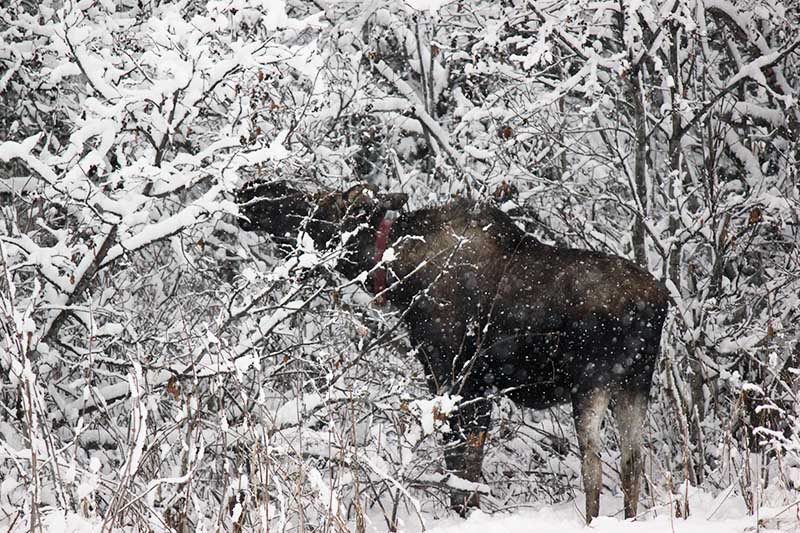

What I know now is that garlic deters pests as big as moose and deer, as well as smaller mammals like rabbits and squirrels.
Yet another reason to plant it all over my garden!
For a tasty cabbage to interplant, why not try this beautiful ‘Brunswick’ cabbage.
You can find seeds in a variety of packet sizes at Eden Brothers.
And be sure to check out our guide to growing cabbage in the garden here.
2. Chamomile
Tea made from this sweet-smelling herb has helped me through many a stomachache.
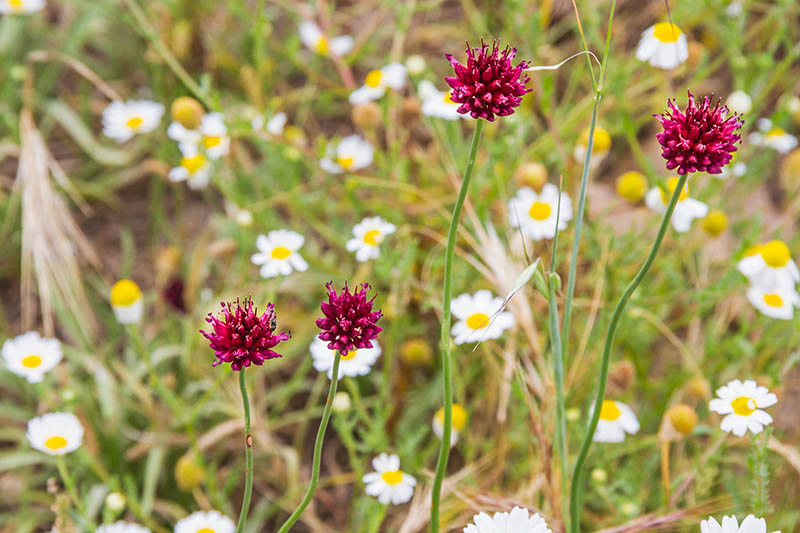

If you love chamomile, Matricaria chamomilla, try planting it next to your garlic: it’s said to improve the flavor of the aromatic Allium.
Find seed packets in a variety of sizes for this pretty, daisy-like plant at Eden Brothers.
Learn more about growing chamomile in your herb garden here.
3. Fruit Trees
Have you ever considered planting garlic at the base of your fruit trees?
If not, now’s the time to start.
Garlic’s antifungal properties can protect against apple scab in apple trees, and leaf curl in peach trees. It also repels aphids, Japanese beetles, and mites.
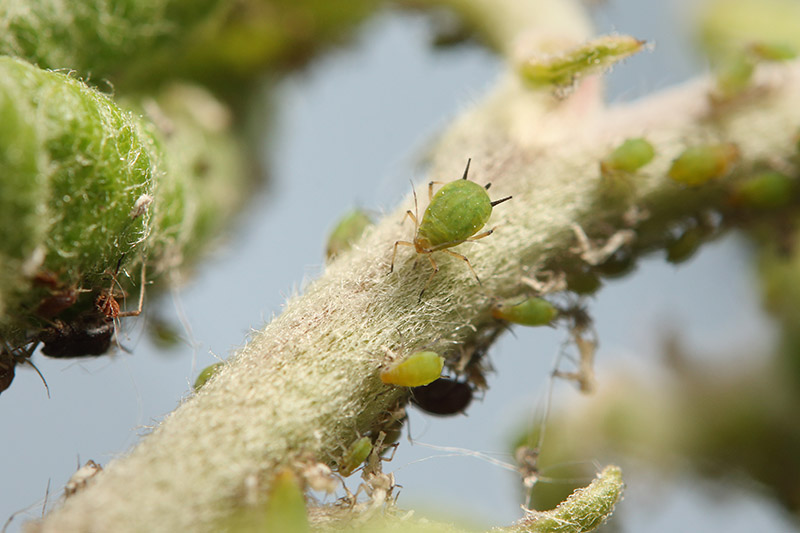

Most importantly for me up here in Alaska, the odiferous bulb repels moose.
Even though I’ve already built fences around my fruit trees, I’ll probably plant garlic there too.
My local moose are extremely persistent, and the more defense my trees have, the better.
Try ‘Crimson Rocket’ peach for a sweet, juicy companion to your Allium plants.
This cultivar is hardy to Zones 5 to 8, and you can find bare root trees available at Burpee.
4. Peppers
Garlic can help keep troublesome fungi away from these sun- and warmth-loving plants.
Plant peppers alongside young garlic in late spring or early summer, and watch as your peppers thrive in the absence of soil-borne verticillium wilt, Phytophthora blight, and white mold.
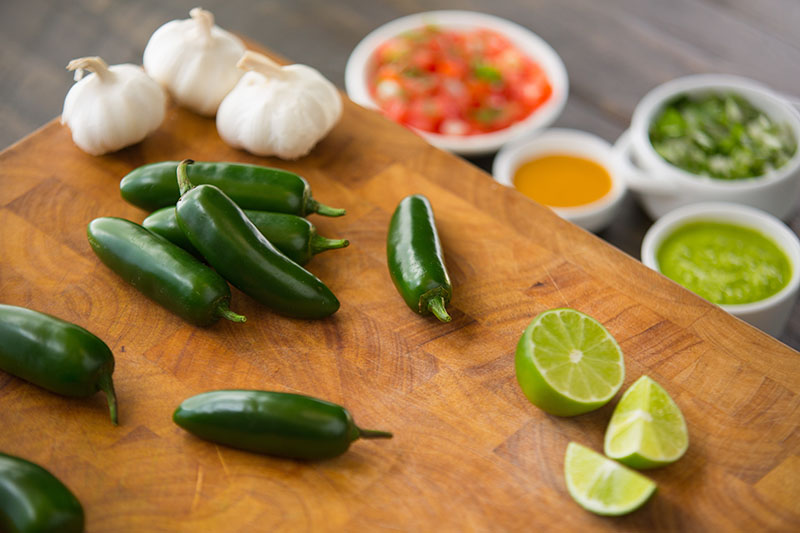

I, for one, plan to plant ‘Jalapeno’ peppers alongside my A. sativum this spring.
These are two of the delicious ingredients that I use to make my favorite homemade salsa fresca.
How perfect will it be to be able to harvest them both from my own garden in the fall!
‘Jalapeno’ peppers are perennial in Zones 9 to 11, and grow as spicy annuals everywhere else.
You can find ‘Jalapeno’ seeds in a variety of packet sizes at High Mowing Seeds.
Learn more about growing peppers in your garden here.
5. Roses
Though garlic’s nickname is “the stinking rose,” it’s not likely that you’ll ever actually confuse your garlic plants for one of these sweet smelling flowers.
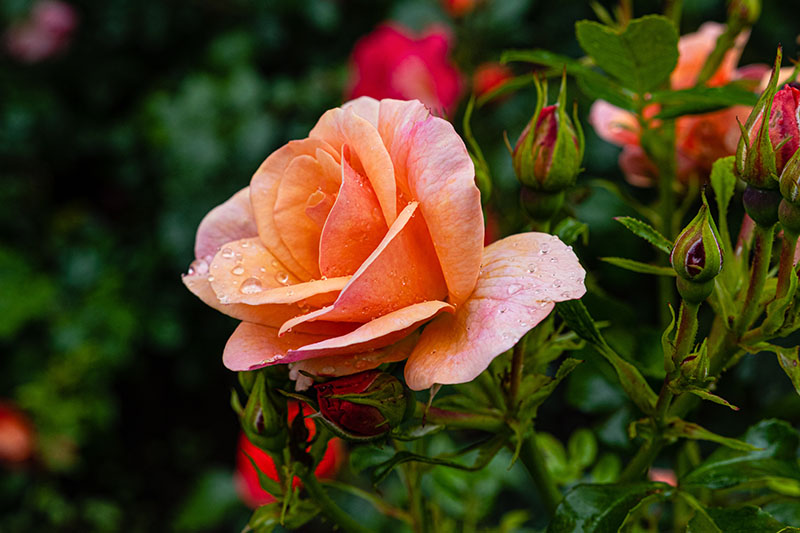

And neither will the pests that love roses.
Rose pests hate garlic.
Plant cloves in a circle around your favorite rose bushes and watch as – for once – spider mites, ants, snails, and blackspot fungi leave your gorgeous blooms alone.
Try interplanting extra-cold-resistant ‘Coral Drift’ roses with your A. sativum.
They’re hardy in Zones 4 to 11, and bare roots are available from Burpee.
You can also find live plants in one- and three-gallon containers available from Perfect Plants Nursery.
Read more about growing roses here.
6. Rue
Are onion flies laying eggs at the base of your garlic plants causing maggots to infest your Allium bulbs?
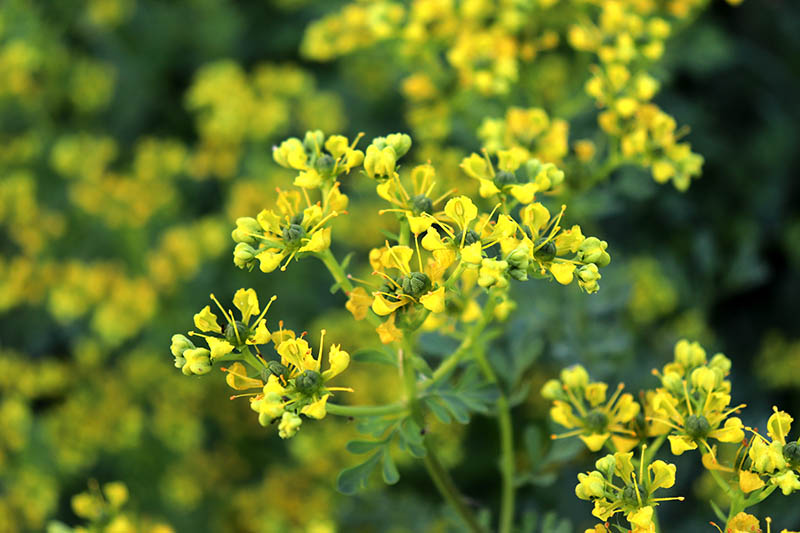

Try planting rue, Ruta graveolens, along the border of your Allium patch.
With a long history of medicinal use, this powerful-smelling herb is also a known pest repellent, particularly noted for its ability to keep flies and maggots away.
Hardy in Zones 4 to 10, you can find rue seeds in a variety of package sizes from True Leaf Market.
7. Spinach
Spinach is beneficial because it creates a form of ground cover when interplanted with the stinking rose, preventing weeds from interfering with its growth.
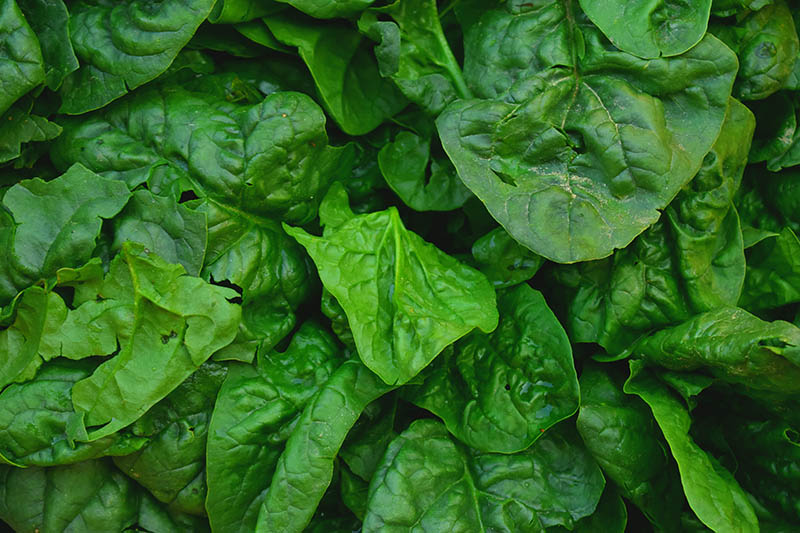

You can also try sowing arugula and lettuce as similar low lying plants alongside your growing bulbs.
And since you’d be harvesting these plants, you’d need to succession plant seeds every two to four weeks to keep a continual protective layer around your garlic.
Just make sure you choose a spinach cultivar that spreads around six to nine inches and grows about six to nine inches tall at maturity.
You don’t want it to overshadow your A. sativum, but you do want it to spread so it can act as a useful weed barrier.
Try ‘Double Take Hybrid’ spinach, hardy in Zones 2 to 9.
Packets of 200 seeds are available from Burpee.
8. Strawberries
First, a disclaimer: some gardeners think garlic can actually inhibit the growth of strawberries. But this hasn’t been definitively proven.
What has been proven is that garlic deters spider mites, which can devastate a strawberry patch.
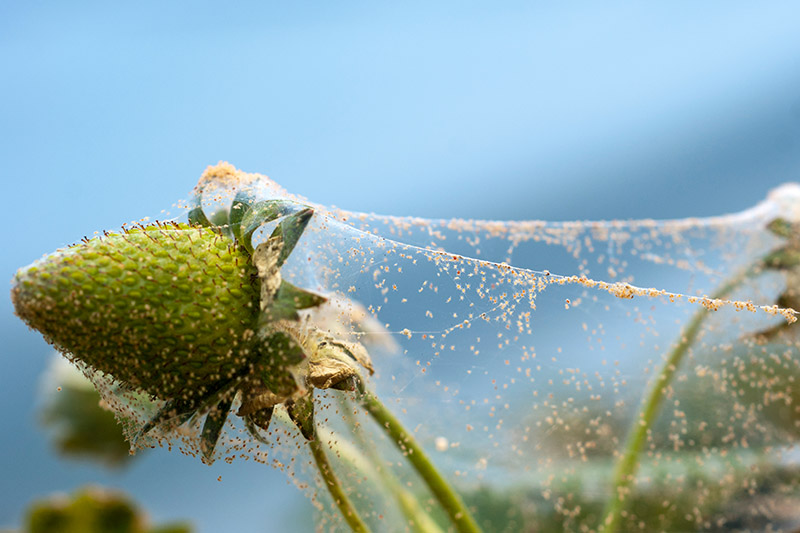

For best results, plant two rows of smelly helper bulbs in between two rows of strawberries.
Looking for a sweet strawberry cultivar to grow in your A. sativum patch?
Try ‘Jewel.’ It’s hardy to Zones 4 to 8, and bare root plants are available from Burpee.
Or choose from one of our 35 favorite strawberry varieties.
9. Tomatoes
A nightshade like the aforementioned peppers, tomatoes benefit from growing near garlic, too. The odiferous bulbs can help to keep spider mites away from tomato plants.
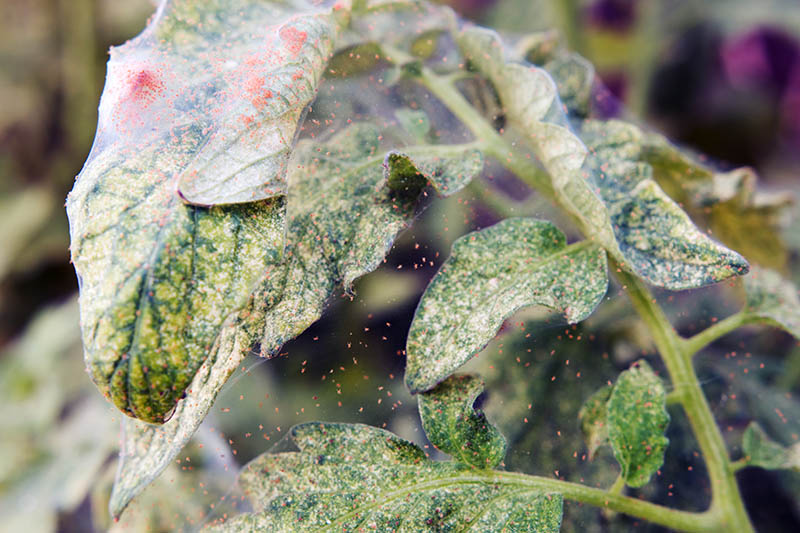

Tomatoes can already be tricky to grow, so why not sow A. sativum in a row between your tomato plants for extra protection from pests?
I plan to try these ‘Fresh Salsa Hybrid’ tomatoes in my garden – perfect for adding to homemade fresh salsa.
Plants and seeds are available from Burpee.
Planting garlic in between the tomatoes makes it that much easier to harvest both at once for garden-fresh salsa.
Plant a spring crop of garlic about a month before you sow the tomatoes and they’ll be ready for harvest at the same time.
Or see our roundup of the best tomato varieties to grow at home for more ideas!
Where There’s Garlic, There’ll Be Joy
The plants described above are perfect companions.
They either offer added benefits when grown alongside my favorite, flavorful bulb, or they stand to benefit significantly from being planted beside the delightfully stinky Allium.
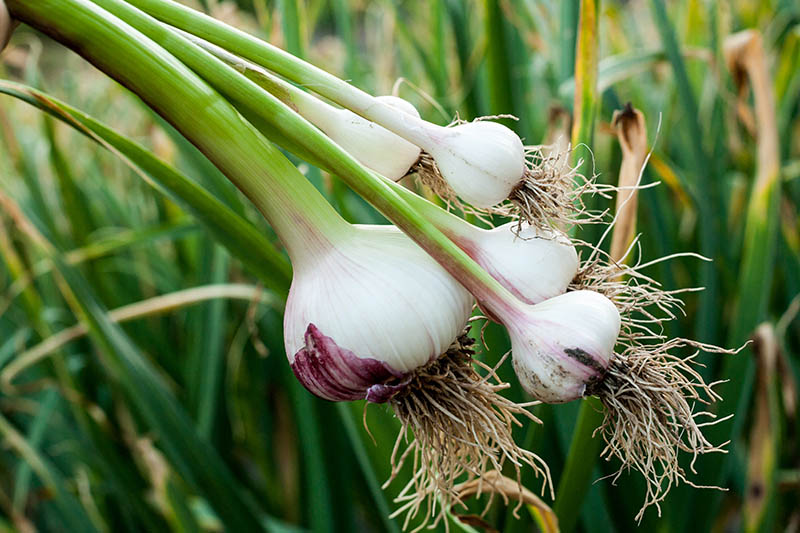

But aside from the list of plants you don’t want to grow with A. sativum, you can pretty much stick the bulb near any growing thing and watch as it lends its pest-repelling superpowers.
Have you ever tried companion planting with garlic? Which veggies, fruits, or herbs benefited the most from growing in close proximity to this smelly herb? Let us know in the comments!
And to learn more about growing garlic in your garden, check out these guides next:
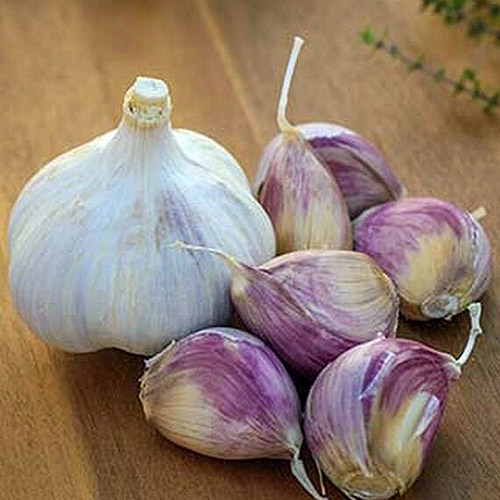
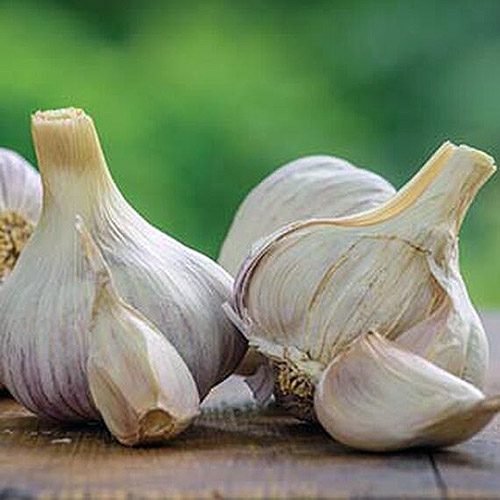
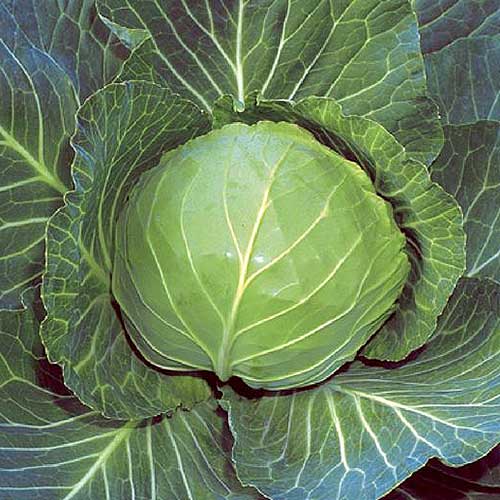
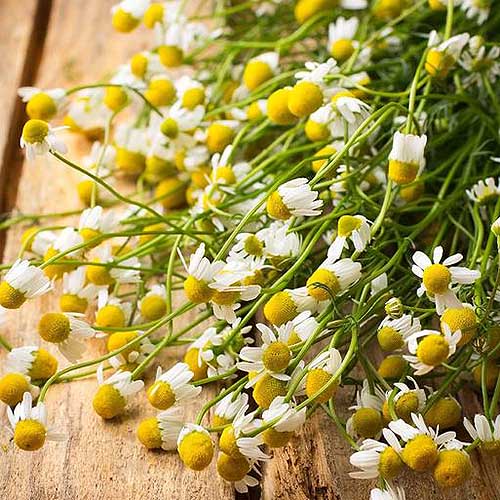
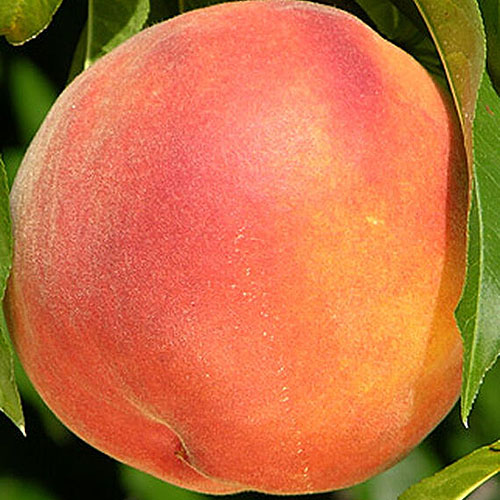
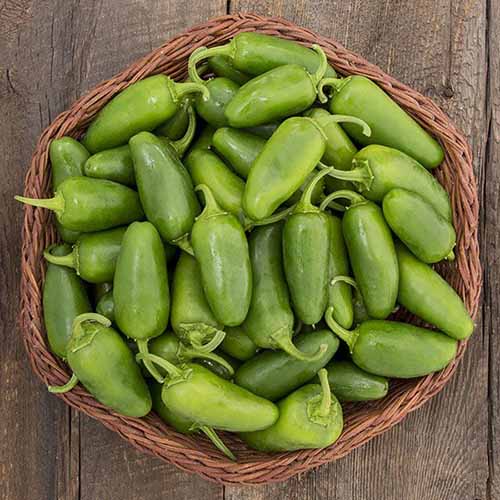
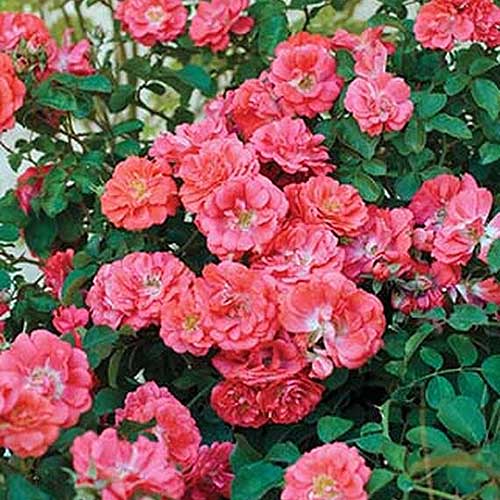
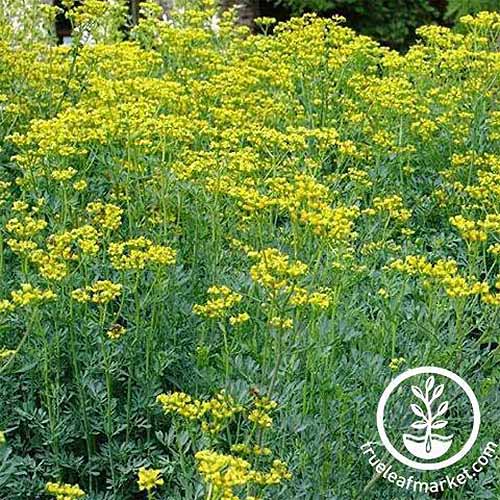
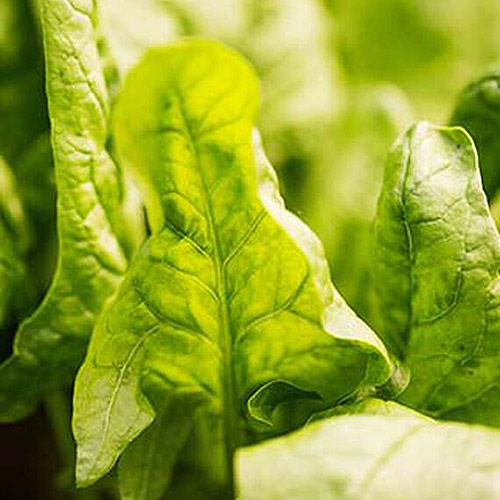
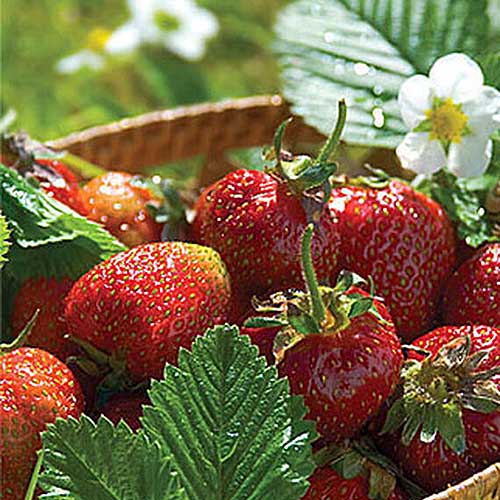
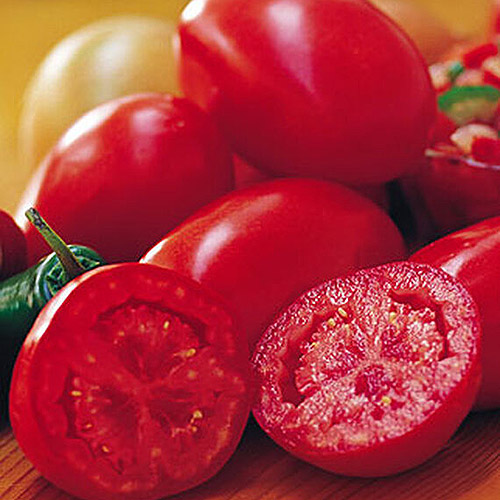
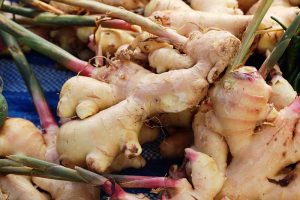
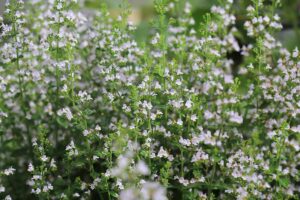
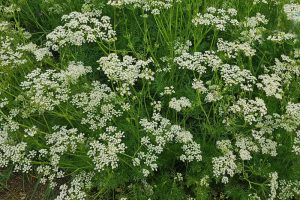
Can I plant garlic in the same pot with a small maple tree?
Hi Angelie! Thank you for your question. Do you have any more information about the tree? Does the cultivar produce a shallow root system, for example, or one that tends to run deeper? That’s one issue I can think of with planting garlic in the same pot. If the roots are shallow and tend to spread outwards, they might affect the garlic growing underground. In addition, garlic needs lots of space to grow big heads, so one downside of planting it in close proximity to another plant is that you’d get smaller garlic heads because the two root systems are… Read more »
Can I plant fall garlic with lily bulbs?
Hello Jackie Riggs! Planting fall garlic with lily bulbs would work, with a few cautions. Both need full sun and well-draining soil, so that’s cool. But I wouldn’t plant them too close together, both because you’ll be pulling the garlic up at some points, and because they each would suffer if the other plants were shading them. Also, when you’re creating a design with lily plants, the foliage of garlic may or may not fit in. So be sure to consider what garlic looks like as it grows–our guide is a great place to check out some photos. In brief,… Read more »
Do you know if Zucchini could be grown with garlic? I’d love to see if the pests that destroy my plants would be repelled.
Yes, you can certainly plant garlic with zucchini. Good luck!